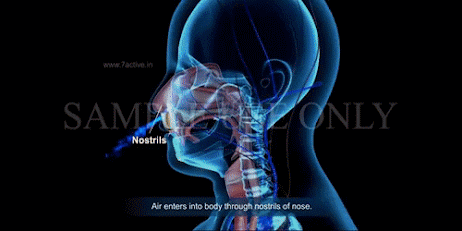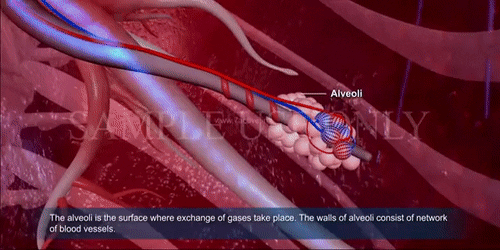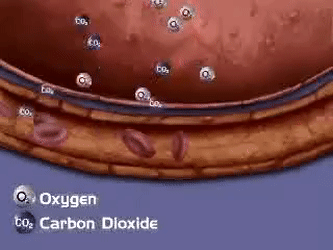What body parts form the respiratory system?
The respiratory system has two main parts: the lungs and the respiratory tract. Air enters and leaves the body though the respiratory tract.
• The interior of the mouth and the nasal cavity come together at the top of the neck.
• The respiratory tract continues from the neck down to the chest. At this stage, it is made up of the pharynx, the larynx, and the trachea.
• Two small tubes called bronchi connect the trachea to the lungs. The lungs are large, spongy organs. A large muscle called the diaphragm is beneath them.
• Within the lungs, the bronchi divide into smaller tubes called bronchioles.
• Tiny air sacs called alveoli are at the end of each bronchiole. The alveoli are surrounded by small blood vessels called capillaries.
How do we breathe?
As we breathe, three processes are repeated.
1 Inhalation: When we breathe in or inhale, air containing oxygen enters the respiratory tract through the mouth or the nasal cavity. Hairs at the entrance to the nasal cavity clean the air of dust and the air warms to body temperature.
We breathe in by contracting the intercostal muscles between the ribs, and the diaphragm. The lungs expand and open up, allowing air to enter.
2 The exchange of gases: When the air reaches the alveoli, oxygen passes into the blood capillaries that surround them. At the same time, carbon dioxide passes from the capillaries into the alveoli.
3 Exhalation: When we breathe out or exhale, we relax the respiratory muscles and the lungs become smaller. The air, containing carbon dioxide, is pushed out of the lungs into the respiratory tract. The air exits the body through the nose or mouth.

















No hay comentarios:
Publicar un comentario
Nota: solo los miembros de este blog pueden publicar comentarios.